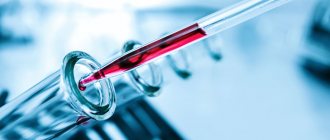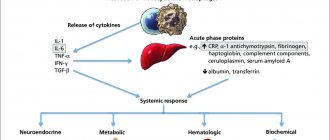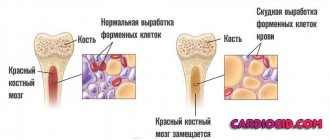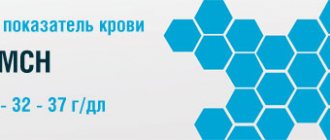What does ESR mean?
In fact, this is not a term, but an abbreviation. Full explanation of ESR is the erythrocyte sedimentation rate.
The study of this indicator began in 1918, when the Swedish scientist Robin Fareus discovered that at different ages and during pregnancy, as well as during various illnesses, red blood cells behave differently. Later, other scientists, Westergren and Winthrop, began working on developing methods for studying their behavior. Even now, this parameter is measured during a general blood test. However, when the ESR is elevated, few people understand what this means. But you shouldn’t mindlessly panic about such news; too many factors can increase the level of red blood cells. And even if you have some kind of inflammation or disease, it is likely that now you can cure them without difficulty. The main thing is to urgently contact a specialist.
Methods for reducing ESR
Elevated ESR in adults (causes include obesity) - this means that the indicator deviates from the optimal value. The erythrocyte sedimentation rate in the blood must be reduced. For this purpose, medications and folk recipes are used.
Treatment should be prescribed by a specialist, taking into account the cause of the increase in ESR and the individual characteristics of the body.
Reducing ESR with medications
To reduce ESR, a person is prescribed medications. Their list depends on the reason that influenced the increase in the indicator. The table shows the drugs recommended for high erythrocyte sedimentation rate.
| Name of the disease | Drug treatment |
| Angina | Therapy includes the use of the following drugs:
Additionally, sprays (Tantum Verde, Hexoral, Stopangin) and lozenges (Grammidin, Strepsils, Anti Angin formula) are prescribed for the throat. These drugs reduce pain and inflammation. |
| Salmonellosis | If you are ill, it is recommended to take the following medications:
|
| Candidiasis | In case of illness, antifungal agents are prescribed in the form of tablets (Pimafucin, Diflucan, Clotrimazole) and a suppository (Terzhinan, Hexicon, Povidone-iodine).
|
| Worm infestation | To treat the disease, it is recommended to take anthelmintic drugs. Medicines in this group fight worms. Anthelmintic drugs include Nemozol, Vermox, Dekaris. Additionally, you should take immunostimulating drugs and vitamin complexes. |
| ARVI | In case of pathology, the following means can be used:
|
| Pancreatitis | The disease is treated with the following medications:
|
| Vasculitis | Treatment involves the use of the following drugs:
|
| Cystitis | Medicines to treat the disease:
|
| Pyelonephritis | Drugs used for treatment:
|
| Allergic reaction | The following drugs are used for treatment:
|
| Diabetes | Drugs used to treat the disease:
|
| Iron-deficiency anemia | The following medications are used as therapy:
|
| Dehydration | Treatment of the condition:
|
Traditional medicine
Increased SOY in the blood in adults (reasons include anemia) - this means that the indicator deviates from the norm. To reduce the erythrocyte sedimentation rate, the use of folk remedies may be recommended. The recipes have a natural composition and have a low likelihood of side effects.
With a high ESR, the following folk remedies can be used:
- Lemon juice and garlic. To prepare the recipe, you need to take 2 heads of garlic, peel and chop the product. Additionally, you will need freshly squeezed lemon juice. Everything must be mixed thoroughly and stored in the refrigerator. Take 1 tsp after meals. 2 times a day.
- Beetroot decoction. The product cleanses the blood. To prepare the recipe, you need to place 2 beets in a saucepan (pre-wash, peel, cut), add 3 liters of water. Bring to a boil, cook for 2 - 3 hours. Wait for the mixture to cool, take 100 - 150 ml before breakfast.
- Infusion of coltsfoot. To prepare, take 2 tbsp. l. crushed plant and 250 ml of hot water. Leave the mixture for 20 – 40 minutes, wait for it to cool, filter through cheesecloth. Take the product 30 minutes before. before meals, 100–200 ml 2 times a day.
- Sea buckthorn berries. The component must first be dried. Berries should be added to tea and left for 15-20 minutes. Drink the resulting drink throughout the day. Drink about 200 – 300 ml per day.
- Calendula and chamomile. To prepare the recipe, you should take an equal amount of ingredients. Pour 250 ml of hot water over them and close the container tightly with a lid. Additionally, the dishes need to be wrapped in a towel. Infuse the product for 30 - 40 minutes, filter through gauze. Take it after meals, 0.5 cups per day.
Erythrocyte sedimentation rate in the blood is an analysis that is used to prevent pathologies and evaluate the treatment of diseases. The ESR value may deviate from the norm. Exceeding the indicator indicates many reasons (physiological and pathological). Treatment for high erythrocyte sedimentation rate depends on the cause of the increase.
Medicines and folk remedies are used as treatment. Adults are not recommended to self-prescribe therapy. To determine the factor influencing ESR, you should consult a doctor. The specialist will send the patient for examination, make the correct diagnosis, and recommend effective treatment.
What is the normal ESR rate?
The erythrocyte sedimentation rate is influenced by factors such as age and gender.
The reasons for increased ESR in the blood in women may also be pregnancy. But of course there are many other factors. The following ESR table for women will help determine your norm (note that these indicators do not take into account special conditions of the body, which will be discussed a little later).
| Age | ESR norm |
| From 14 to 18 years old | 3 - 17 mm/h |
| From 18 to 30 years old | 3 – 20 mm/h |
| From 30 years to 60 | 9 – 26 mm/h |
| 60 and older | 11 – 55 mm/h |
| During pregnancy | 19 – 56 mm/h |
Everyone under 14 years of age has the same ESR rate. Only age matters, so if you are looking for the norm only for girls and cannot find it, then there is no need to worry.
| Age | ESR norm |
| Newborns | 0 - 2.8 mm/h |
| From 1 month | 2 - 5 mm/h |
| From 2 to 6 months | 2 - 6 mm/h |
| From 7 to 12 months | 5 – 10 mm/h |
| From 2 to 5 years | 5 – 11 mm/h |
| From 6 to 13 years | 4 – 12 mm/h |
Age is not the only criterion. The factors can be the most unexpected, for example, a too heavy breakfast at best, and a malignant tumor at worst.
Determination methods
A timely analysis of ROE will help identify serious disorders before symptoms appear, which means it will increase the chances of a quick and complete recovery. There are 3 methods for determining speed - Panchenkov, Westergren, kinetics and aggregation. Let's highlight the features of each.
Panchenkov method
Widely distributed in Russia. The least accurate and simplest of all three. A glass capillary with a diameter of 5 mm and a length of 172 mm has an opening of 1 mm.
Gradation from 0 to 10 in 1 mm increments. The upper division (0) indicates the blood boundary. At around 50, the letter “P” indicates the level of the reagent that prevents blood clotting.
A 5% sodium citrate solution should be applied to the glass. Then rinse the capillary with it. The nurse draws blood into it and blows it onto the glass, then again.
The blood on the glass is mixed with the reagent and placed back into the tube. Now you need to secure it in a tripod and record the time for each capillary. After 60 minutes, the speed is determined by the height of the plasma (transparent liquid).
Attention! The measurement results using this method may not reflect the true picture, since it is not possible to perform high-quality washing of the capillaries after repeated use.
Only capillary blood is taken for the study. The results have a large error. The equipment is limited to divisions of 100 units, which means that if the speed is higher, it will not be possible to determine this.
Westergren method
Used worldwide since 1977. Recommended by the Council for Standardization in Hematology. The method involves the use of glass and capillaries, only its length is 300 mm, and the working scale has 200 divisions per millimeter. The diameter of the tube has also been increased - 2.5 mm. This increases sensitivity. The laboratory technician measures the sedimentation within 1 hour. Venous and capillary blood is suitable.
In modern medicine, it has been possible to automate this method, this increases the accuracy of measurements, and the waiting time is reduced to half an hour. Vacuum tubes and a modified stand angle for the capillary are used. However, it was not possible to exclude external factors and completely eliminate the error. The result can be influenced by air temperature, storage time of the biomaterial, correct installation in the tripod, reagent concentration and some others.
If we take into account that the laboratory assistant is simultaneously working with 10 samples, then the time interval between the first and last will be approximately 300 seconds. - approximately 5 minutes. This means that the ESR between 60 and 66 seconds can change by 10 mm. It is not possible to carry out intra-laboratory accuracy control.
Method for measuring the kinetics of erythrocyte aggregation
It was isolated in the 90s by Alifax. Determines red blood cell aggregation optically. If the particle density is greater than the density of air, it settles under gravity at a constant speed. It is proportional to the square of the radius of the particle and the difference between its density and the medium, and is inversely proportional to the viscosity of the medium.
Each sample takes 1000 measurements in 20 seconds. Conversion to mm/h is carried out automatically. All measurements are automated, and the capillary simulates a blood vessel. Venous or capillary blood is used for research. A constant temperature of 37 degrees is maintained in the compartment for biomaterial - this solves the issue of temperature stability. Additionally, the analyzers mark results with a low hematocrit.
If ESR is elevated, what does this mean?
There can be many reasons for this test result. But basically, doctors share 6 main reasons why women have higher ESR than normal:
- Infections. Red blood cells necessarily react to a variety of viruses, bacteria, fungi and parasites, because they can cause disease. Therefore, it will be easier to determine them using a blood test.
- Inflammation. Then not only the red blood cell count increases, but also the white blood cell count.
- Suppuration. As a rule, in this case the symptoms may be more obvious, but when immunity is reduced, it is the ESR that will show what’s wrong.
- Autoimmune diseases. In general, this process is due to the fact that antibodies produced by the body begin to destroy healthy and beneficial cells; in this case, red blood cells play a key role.
- Cancer diseases. Any oncology causes a reaction in the blood, and therefore the red blood cell count will also change.
- Physiological conditions. In such cases, the reasons for increased ESR in the blood of women may be the following: pregnancy, breastfeeding, excess weight, anemia, dystrophy, sudden weight loss and others.
- Destruction of bone marrow and blood cells. As a rule, with this state of the body, ESR increases the most.
Why are ESR indicators important for a woman?
Registration of high levels of ESR in women indicates the progression of various pathologies: infectious diseases, various types of oncology, diseases of the rheumatological group and other equally dangerous types.
Even before the appearance of noticeable symptoms, the ESR level may indicate the progression of diseases. If ESR levels are within the normal range, but the patient’s complaints are still present, then other, more detailed types of studies of the body are prescribed.
When conducting a blood test to determine ESR standards in women, doctors take into account the following reliable truths:
- The closer to recovery, the higher the ESR indicator,
- To accurately diagnose pathologies, it is better to use hardware tests, depending on the patient’s complaints.
- Depending on the characteristics of organisms, ESR levels in females are higher than in males,
- If high levels are present for a long time, then this indicates inflammation in the body, or the progression of a malignant tumor formation,
- In the presence of acute inflammation, the ESR begins to increase a day after the onset of disease progression. Before the ESR increases, the level of leukocytes in the blood increases.
The study of ESR levels does not always reflect the correct results, and can be observed without deviations even with the progression of inflammation.
Research methods
Deviation of red blood cells from the norm can be either an increase or a decrease. Mostly, there is an increase in ESR, but there are also cases of its decrease. There can be many factors: poisoning, hepatitis and poor circulation, or simply blood pathologies. As a rule, the latter appears already in adulthood. Also, under some conditions, vegetarianism can cause changes in red blood cell levels.
There are three methods by which this parameter is usually monitored: Westergren, Padchenkov, Wintrob.
The most universal technique used around the world to determine ESR is the Westergren technique. Blood from a vein is mixed with sodium citrate and left for a while (about an hour) in a test tube. The results obtained using this method are considered more accurate.
Pachenkov’s method differs from the previous one only in that blood is taken from capillaries and is used only in the countries of the former USSR. The results are the same as in the first method, but usually Westergren is trusted more.
The latter, the Wintrobe method, is special in that the blood is not diluted, but an anticoagulant is added to it and analyzed in a special tube. This method has disadvantages, since if the erythrocyte sedimentation rate is too high (more than 60 mm/h), the analysis cannot be done.
What does the result of the analysis depend on?
Numerous factors can affect the activity of red blood cells, so many details are taken into account when determining the results and whether they correspond to the norm. The reasons for increased ESR in the blood in women may lie in the time of the procedure, age, lifestyle, health status and other nuances.
The indicator is mainly influenced by:
- floor;
- taking oral contraceptives;
- anemia;
- time of the procedure;
- immunoglobulins in the body;
- allergy;
- menstruation;
- too rich breakfast;
- inflammation.
Red blood cells settle due to gravity, since they weigh more than plasma. The ESR itself will not show what the problem is, but together with other parameters it will already be possible to make a diagnosis. The analysis can also help to detect hidden ailments and pathologies, due to which it will be possible to begin their treatment on time. Any therapist will be able to determine a possible diagnosis if other symptoms are obvious, but in some specific cases a more detailed diagnosis will be needed.
Norm of ESR in the blood of women by age (table)
Reference (acceptable) values are selected individually, taking into account age, stage of the menstrual cycle or stage of pregnancy. Each woman can interpret the analysis information obtained independently. However, the data obtained have no diagnostic value without a complete history. A transcript of the results and clarification of the diagnosis should be provided to the attending physician.
How to return ESR to normal?
When something in the body goes beyond a healthy state, any person has a natural desire to return everything to normal.
And how to do this? Only cure the cause, that is, the disease that caused the increase in ESR. Of course, self-medication will not lead to anything good. Instead of looking for the necessary antibiotics and other drugs on your own on the Internet, it is better to immediately contact a specialist. It is he who will prescribe the necessary course of treatment after determining the diagnosis. After successful treatment of the disease, the ESR will return to normal after some time (2-4 weeks in adults and up to 6 weeks in children).
In case of anemia, iron-containing foods, proteins and some traditional methods will help restore the indicator, but in this case it is also better to consult a doctor.
If you are simply dieting, fasting, or experiencing a special physiological state (pregnancy, lactation, menstruation), the indicator will return to the desired level as soon as your normal physical condition is established. In this case, there is nothing to worry about.
False increase in ESR
ESR may falsely increase. At the same time, there are no pathologies in the body.
A false increase is possible in the following cases:
- the use of medications that contain hormones (oral contraceptives, glucocorticosteroids);
- long-term intake of vitamin A;
- vaccination against hepatitis less than 10 days before submitting the biomaterial for analysis;
- elderly age;
- individual characteristics of the body - according to statistics, 10 - 15% of people have an increased ESR.
Elevated ESR in children
If you are worried about your child, then know that this indicator often increases with infectious diseases and inflammation, especially together with a violation of the norm of other blood test parameters and a general deterioration in physical condition, as well as with typical symptoms of diseases. Another factor may be the use of certain medications.
Below is a list of diseases that are characterized by an increase in ESR during the examination: infections (acute respiratory infections, bronchitis, sinusitis, pneumonia, cystitis, hepatitis, fungus, cystitis, etc.), diseases of the liver, kidneys, biliary tract, anemia, tuberculosis, blood diseases, gastrointestinal tract -intestinal tract, cardiovascular system, metabolic disorders, endocrine gland dysfunction (diabetes), oncology, bleeding, trauma.
In childhood, most diseases and ailments are more easily tolerated than in conscious or even older age, but only if they are detected in time. Therefore, it is very important to regularly show your child to the doctor.











